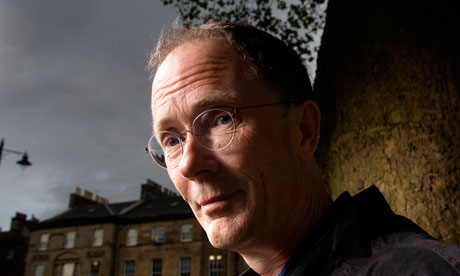
Can advertising ever be art? It's a question answered more affirmatively in visual media, with nods to Warhol's career as a commercial illustrator or Godard's TV commercials. Over on the bookshelves, while plenty of writers owe their first break to the time and money afforded by a career as a copywriter, few blot their later lives with anything more commercially suspect than dust-jacket blurbs. Yet one US literary project celebrating its first anniversary this month flips the question: can art serve as advertising?
In July 2009, two American cultural commentators, Rob Walker and Josh Glenn, began to buy and resell bric-a-brac at their Significant Objects store on eBay. In each listing, Significant Objects substituted the usual descriptions for a short story featuring the item, to see whether "narrative transforms insignificant objects into significant ones". The pieces were written by authors such as William Gibson, Sheila Heti, Nicholson Baker and Jonathan Lethem. Bylines accompanied each listing and bidders understood that they were only offering to pay for a shot glass or secondhand hairdryer that had served as literary inspiration. Yet, if they won, they would be buying both the gewgaw and a print-out of the story.
Sales figures, if they don't entirely affirm Significant Objects' hypothesis, certainly go some way to show the overlap between the buyers of chintzy detritus and America's micro-fiction enthusiasts. The first 100 listings generated $3,612.51 (£2,400) from $128.74 of junk. Initial proceeds went to the authors – who also retained copyright – and the project continues, with writers such as Neil LaBute and Rick Moody drawing up narratives. You can see all the goods, read all the stories and the amount paid for each listing at Significantobjects.com. Or, if you prefer, you can wait until 2011, when the American publishers Fantagraphics Books are due to bring out an anthology.
The texts are good. Meg Cabot's acutely phrased teen tale reads like the perfect high-school diary entry, William Gibson's ashtray anecdote is filled with military-industrial intrigue, Sheila Heti pours a lot of sexual frustration into a miniature porcelain Cape Cod souvenir shoe, and Neil LaBute's golden-bunny-candle narrative is as sinister as you'd expect.
Of course, literary greats have often made the jump from advertising. Ad man turned novelist F Scott Fitzgerald declaimed advertising as having contributed "exactly minus zero" to human endeavour around the same time Ernest Hemingway is supposed, perhaps apocryphally, to have penned a six-word short story in the form of a small ad: "For sale: baby shoes, never worn." Dorothy L Sayers, Fay Weldon, Don DeLillo, Salman Rushdie and Ogden Nash all served as copywriters before turning to more serious writing. Indeed, ad campaigns may have asserted peculiar forces on the Booker. Surely Indra Sinha's award-winning copywriting work for Amnesty International and the Bhopal Medical Appeal must have fed into his Booker-shortlisted 2007 novel, Animal's People?
Still, few continue their marketing careers after bestseller success, and despite all this common ground, it's hard to accept Significant Objects' stories as genuine ad copy. The charm of the listings is that they never attempt to be anything other than fiction. No buyer believes that the ashtray featured in William Gibson's entry truly did come from a friend's dad in the military, and so readers enjoy the quality that Immanuel Kant ascribed to all aesthetic judgments: disinterestedness. It might sound like an obscure point, but Kant argues that the beautiful must be pleasing on its own account. "One must not be in the least prepossessed in favour of the real existence of the thing," he writes in the Critique of Judgement (1790) "but must preserve complete indifference in this respect, in order to play the part of judge in matters of taste."
Would Kant say that, in order to truly aesthetically appraise a story about a rabbit-shaped candle, you cannot simultaneously be materially interested in a rabbit-shaped candle? I don't think so. But if the story made genuine, material claims about a specific candle, then I think this would reduce its artistic merit.
These are fine sentiments to consider in an age when an increasing amount of creativity appears to be being underwritten by marketing budgets. The fun thing about Significant Objects is that it seems to get artists to do the marketing while keeping their aesthetic disinterest intact.

